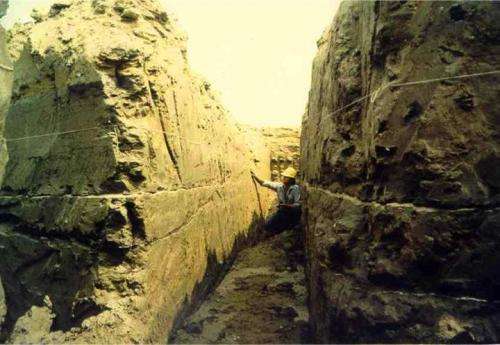Researchers get $1.25 million to advance carbon storage

Clemson University researchers and their partners at Georgia Institute of Technology, UNAVCO and Grand Resources Inc. received a $1.25 million award from the Department of Energy (DOE) to develop technology that will significantly improve the ability to monitor and safeguard geologic carbon storage.
Geologic carbon storage involves the injection of carbon dioxide (CO2) into underground formations that have the ability to securely contain the CO2.
"The underground formations expand during injection, much like your chest expands when you take a breath of air," said Lawrence Murdoch, principal investigator and professor of environmental engineering and earth sciences at Clemson. "Monitoring tiny movements, or strains, associated with this expansion can be used to determine where the CO2 is going and to assess the likelihood that problems may arise that cause leakage."
The researchers are developing new instruments designed to make ultra-high-resolution strain measurements in the vicinity of CO2 storage sites. The measurements will be interpreted with sophisticated computer simulations using the Palmetto Cluster, a high-performance computing resource at Clemson.
The instruments and computations will be tested on shallow wells on the Clemson campus, but ultimately the technology will be tested at Avant Oil Field in Oklahoma.
"The ultimate goal of our project is to make CO2 storage cheaper and safer by developing ways to measure and interpret the strain field caused by CO2 injection," he said. "The technologies we develop will help ensure safe and permanent storage of CO2 to reduce greenhouse gas emissions without adversely affecting energy use or hindering economic growth, a major goal of the DOE's Carbon Storage Program."
The project is being conducted by applying a broad range of expertise in theoretical and applied aspects of hydromechanical well testing, high-resolution strain instrumentation, geomechanics and model inversion.
Murdoch said this technique could improve the characterization of geologic storage formations and confining units, as well optimize storage operation by anticipating problems before they occur.
The concept is to measure strains underground during injection, interpret the field data and provide the interpretations to managers, engineers and decision-makers. This is a challenge because the strains will be remarkably small.
"To get an idea how small, imagine a bar from Clemson to New York City, 1,000 kilometers long, and you stretch it by one millimeter, that is one nanostrain," Murdoch explained. "Our team will develop instruments with a goal of detecting one nanostrain deep underground."
The interpretations are equally challenging since they require a huge computational effort to evaluate the scenarios that best match the field data.
"Existing algorithms are not up to the task, so the team is developing new strategies and deploying them on Clemson's Palmetto Cluster computer to identify optimal interpretations," he said.
Any underground injection will cause strain so the instruments and computational methods the researchers develop for CO2 applications can be used elsewhere.
"Fracking and disposal of produced water by injection into deep wells cause strain, and the technique our team develops may one day also contribute to understanding those processes," said Murdoch.
Provided by Clemson University